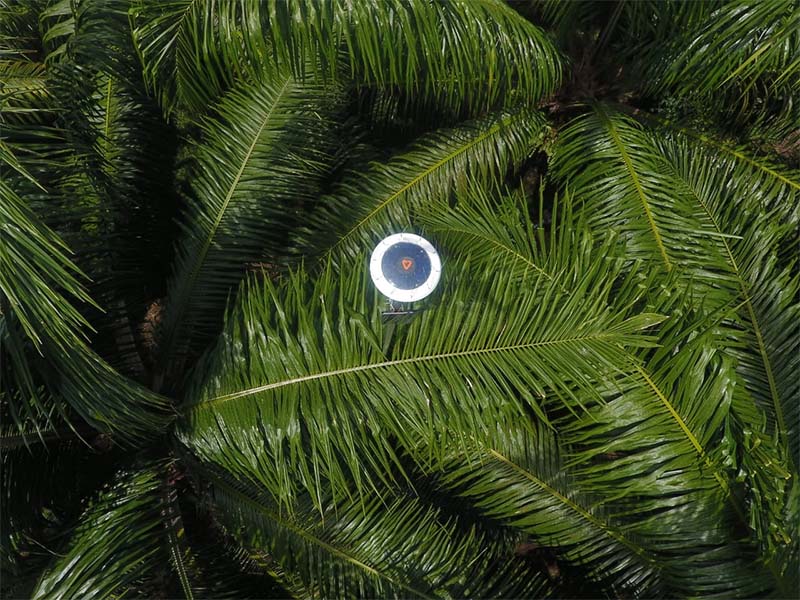Finding the Crop Protection Sweet Spot

“Using Arable to monitor the plant data means better decisions on when to apply and when not to apply. If you can use data to extend each interval between flyovers by an extra two weeks, you will spend less money for the same crop outcome.”
Adolfo Meneses, CEO, Agroinnova
Objective
Capture in-field data to spray more effectively, reduce costs, lower the environmental toll of crop protection, and increase customer loyalty.
Challenges

Ag InnovaTech is the consulting arm of AgroInnova, the decade-old, Costa Rica-based seller of fertilizers and inputs for crop disease prevention. Ag InnovaTech provides recommendations to about 100 growers on foliar and soil nutrition programs, with a focus on fertigation liquids. Beyond the main Costa Rican export crops of bananas & pineapples—generally produced on large farms—and coffee beans—generally produced by smallholder farmers—Ag InnovaTech consults mainly on sugarcane, as well as specialty vegetables, melons, plantains, mangoes, and rice. They have operations along the Pacific and Caribbean coasts, as well as in other Latin American and Caribbean countries.
The Deployment
AgroInnova CEO Adolfo Meneses first met Arable in 2017, and soon tested an early generation Mark device in his field. He saw potential in the data for crop protection recommendations, but wasn’t sure exactly how it would all come together for his business. He kept the device, and checked on it as the seasons progressed, slowly forming a project in the back of his mind. In late 2020, after reading about Arable’s partnership with Argentinian agtech consultants Caburé, he had a vision for how to replicate their success in Central America. He deployed 30 Arable Mark 2 devices across Costa Rica to begin collecting data.
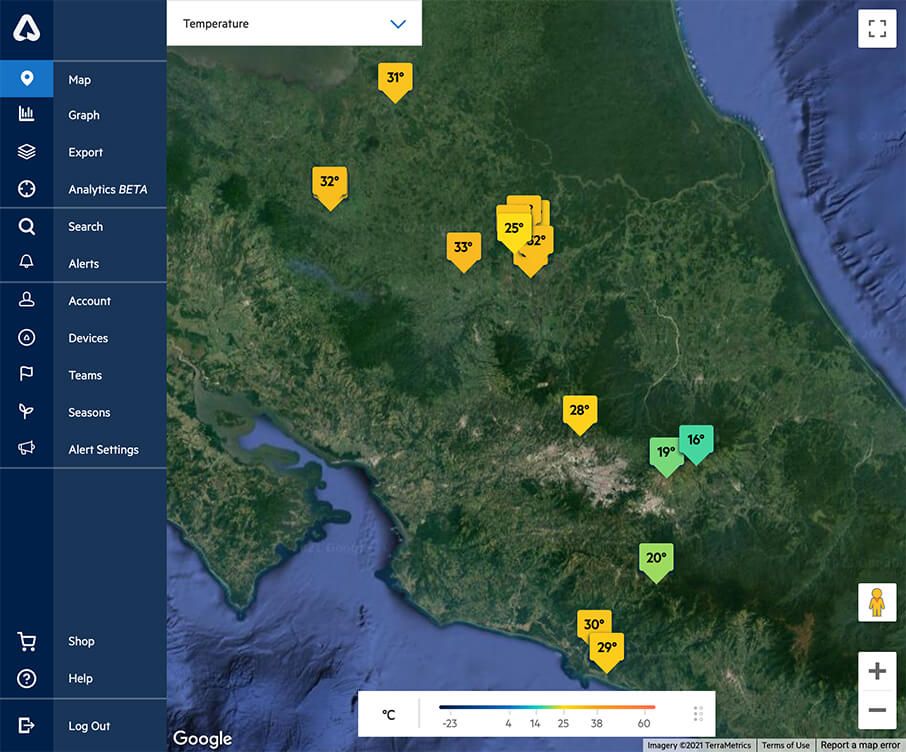
The Challenge
Sigatoka disease in bananas and Fusarium in pineapples are two major diseases that attack large-scale farms in Costa Rica. The Costa Rican government regulates how many times in a season growers can spray, and agtech consultants like Ag InnovaTech need to be able to optimize spray timing in order to maintain yield under these regulations. Import countries have their own certifications and regulations as well, which have to be both met and reported on. The conventional method of crop protection often involves some degree of “spray and pray,” which translates into the kind of overspraying that pours money and excessive chemicals into delicate ecosystems and waterways, damaging soil and reducing ecosystem services.

Going against the grain to change this mindset requires stalwart dedication and years of building trust, reflected in Ag InnovaTech’s strategic business model, centered around customer fidelity, trading off short-term gains with an eye towards longer-term returns. In order to offset lower initial revenue with high customer retention, they need access to the most accurate and reliable data available in order to prove early that they are the best choice for their customers.
On top of this, recent years have seen more climate volatility, especially in tropical regions like Costa Rica, which affects the flavor and outcome of high-value crops exported across the world. Past data providers have not had a deep presence in Latin America, and have not engaged as deeply with Ag InnovaTech as they would like to co-develop business tools.
The Goal
Ag InnovaTech , as the technology management subsidiary of AgroInnova, wants to help their customers spray more effectively, reduce end user costs, lower the environmental toll of crop protection, and maximize the company’s thin profit margins. “If you can use Arable to monitor the plant data, you can make better decisions on when to apply and when not to apply,” says Meneses. “If you can use data to extend each interval between flyovers by an extra two weeks, you will spend less money for the same crop outcome.”
In the future, Ag InnovaTech is working towards being able to estimate their customers’ productivity and be able to forecast yields. Each of these goals must be reached from a foundation of customer trust. They want to nurture a relationship with a data supplier who is invested in a long-term partnership, building business tools hand-in-hand with them.
“Arable helped the producer understand the product’s efficiency and make better decisions.”
YHENNER UMAÑA, COMMERCIAL TECHNICAL LEADER, AG INNOVATECH
The Strategy
Ag InnovaTech’s focus is on disease risk management in crop protection spray application in the larger fields of banana, pineapple, and sugarcane. In general they deploy one Arable Mark 2 device per customer’s field; Costa Rican agriculture runs year-round, with two seasons: summer and rainy. The weather forecasts they use most include precipitation, wind speed, wind direction, and relative humidity. Observed trends include leaf wetness, NDVI, chlorophyll index, and growth stages. They combine these metrics with their extensive knowledge of diseases like sigatoka, Fusarium, and roya (in coffee) to determine the best spray windows for a given disease, in a specific crop, at a particular phase, in a certain location. Having a bird’s-eye view of real-time data across locations streamlines the time they spend with each customer, and lowers operational and maintenance costs.
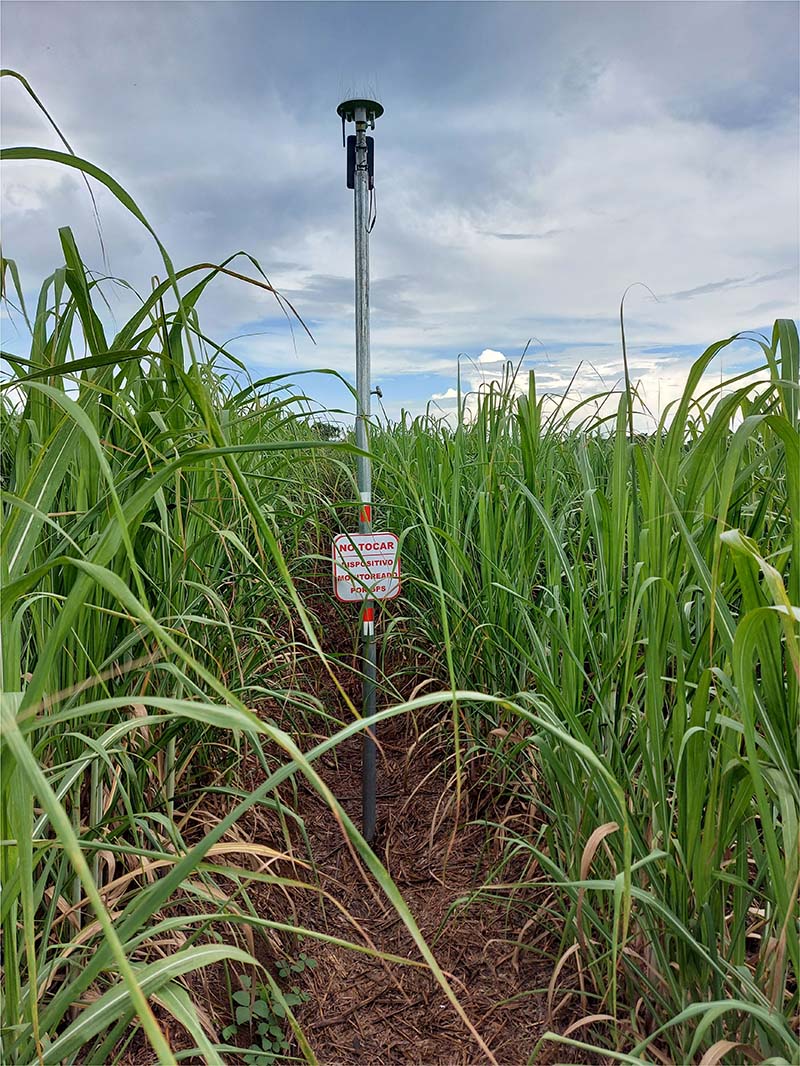
Additionally, in sugarcane, they closely monitor the canopy growth to determine when best to spray an herbicide to bring on weed die-down and keep the sugarcane thriving. In pineapples, they use weather alerts to monitor nighttime temperatures in the fields during three critical months (October, November, December) to mitigate damage from abnormally low temperatures at night, since cold weather makes the fruit unpalatable. Spotting these trends early helps Ag InnovaTech recommend preventive measures faster and more reliably.
In one industrial sugarcane field in northern Costa Rica, Ag InnovaTech’s commercial technical leader, Yhenner Umaña, decided to test the effect of magnesium levels in soil amendments. Magnesium is the central element found in chlorophyll, which is critical for photosynthesis to occur. Higher chlorophyll levels would indicate a greater ability to produce biomass, the goal of industrial sugarcane production.
He placed two Mark devices in one field; in one hectare of the field, he applied dolomite lime, and in another, calcium carbonate. He monitored the chlorophyll index and NDVI weekly with the Arable app to see if he could detect any differences, and what they might be, in order to inform input strategies.
These types of highly specialized analyses are what give Ag InnovaTech an edge over their competitors; they aren’t making recommendations based solely on models, generalizations, and past experience. They are using data direct from the very field they are managing. Through alerts and team management features, they control who sees data from the various locations, and compare different customers’ data to benchmark regional trends and anomalies.
Beyond using weather data that is more accurate than remote-sensed and easier to access than manual scouting, being able to show a customer what is happening in their field in real time raises Ag InnovaTech’s profile as a high-touch service provider who is an expert in their customers’ particular circumstances. This engenders the kind of loyalty that brings greater long-term returns and helps them foster change on the ground, educating growers on best practices on very personal terms.
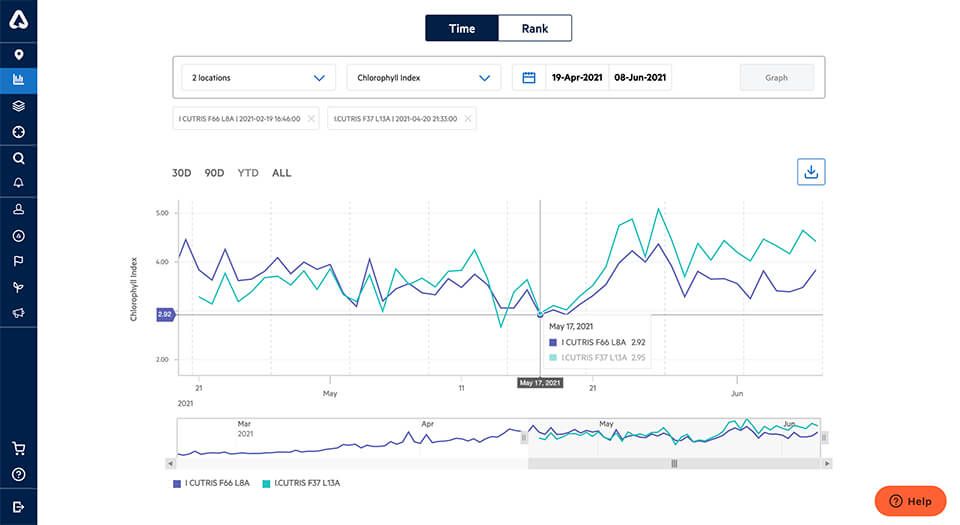
The Results
Additionally, in sugarcane, they closely monitor the canopy growth to determine when best to spray an herbicide to bring on weed die-down and keep the sugarcane thriving. In pineapples, they use weather alerts to monitor nighttime temperatures in the fields during three critical months (October, November, December) to mitigate damage from abnormally low temperatures at night, since cold weather makes the fruit unpalatable. Spotting these trends early helps Ag InnovaTech recommend preventive measures faster and more reliably.
In one industrial sugarcane field in northern Costa Rica, Ag InnovaTech’s commercial technical leader, Yhenner Umaña, decided to test the effect of magnesium levels in soil amendments. Magnesium is the central element found in chlorophyll, which is critical for photosynthesis to occur. Higher chlorophyll levels would indicate a greater ability to produce biomass, the goal of industrial sugarcane production.
He placed two Mark devices in one field; in one hectare of the field, he applied dolomite lime, and in another, calcium carbonate. He monitored the chlorophyll index and NDVI weekly with the Arable app to see if he could detect any differences, and what they might be, in order to inform input strategies.
These types of highly specialized analyses are what give Ag InnovaTech an edge over their competitors; they aren’t making recommendations based solely on models, generalizations, and past experience. They are using data direct from the very field they are managing. Through alerts and team management features, they control who sees data from the various locations, and compare different customers’ data to benchmark regional trends and anomalies.
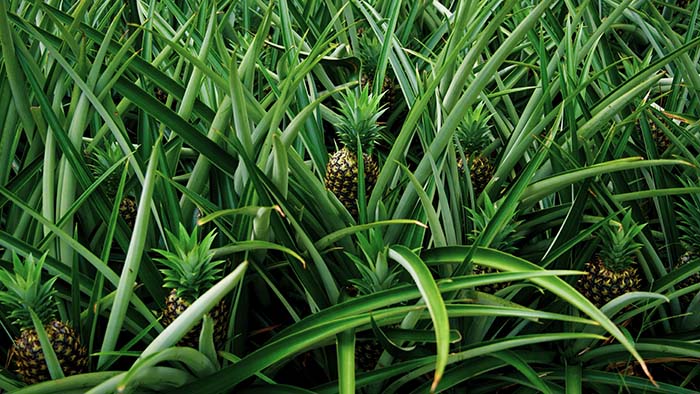
The Outcome
With this proof of concept, Meneses reached out to Arable to brainstorm how he could customize the dataset for his growers’ unique circumstances, and take Costa Rican agriculture to the next level. “In this region, I see more people starting to assess soil water needs and salinity, which is something they haven’t been able to do so easily before Arable,” he says.
While Meneses has ideas about what analytics he wants to see, Ag InnovaTech isn’t in the app business. Using Arable data combined with their own crop models and regional expertise, he plans to co-develop custom analytics dashboards, hosted on the Arable platform exclusively for their customers’ use, with data from their fields. Arable’s durable hardware and reliable data delivery means they can maintain that personalized approach even as they expand deployments to the other countries they serve in the region, including Panama, Guatemala, Puerto Rico, and Honduras.
